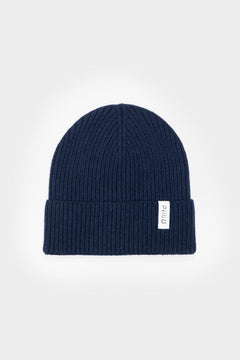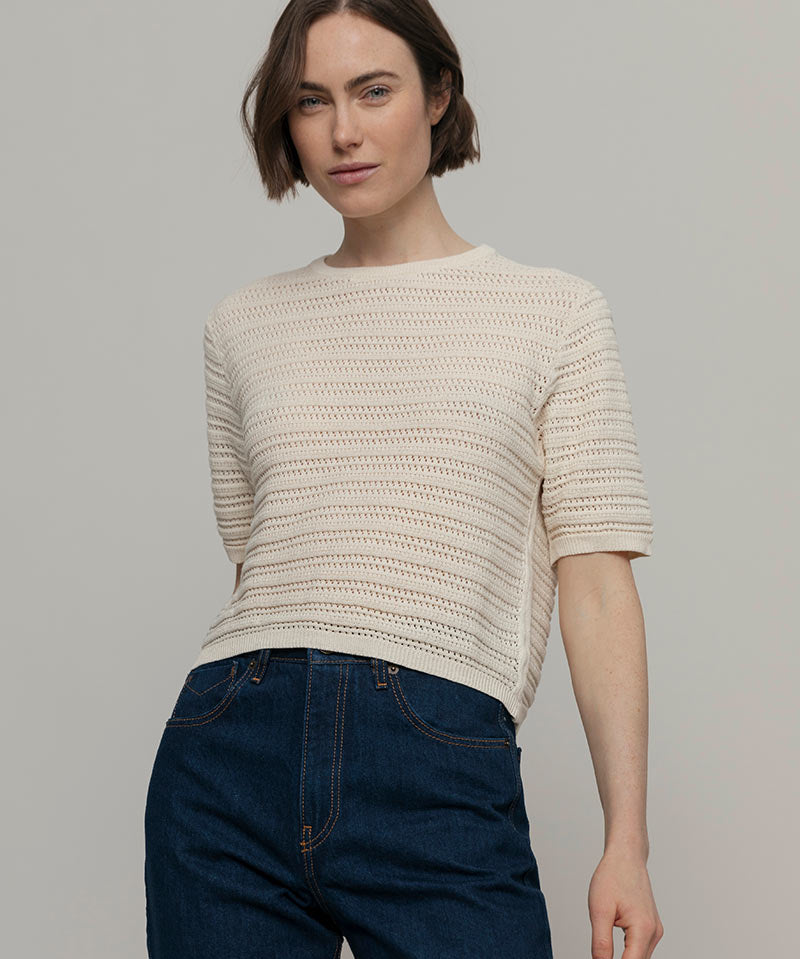Price is one of the most controversial subjects when talking about sustainable fashion. Why can’t a sustainable garment be the same price as a fast-fashion one?
People often ask us this question.
Circular fashion and low-impact materials are so cool, but we must defend workers’ rights. What do you do when apparently you can get the same sweater at 120 or 39,99 euros? How do we behave in everyday life?
We already talked about the real cost of sustainable fashion in a previous blog article but, as a sustainable and circular fashion brand, we would like to come back to it to point out data and information we usually encounter, or crash.
For once, we would like to ask you to see this issue from a different point of view; try not to ask yourself why the cost of sustainable fashion is high, but instead ask yourself how can fast fashion be so cheap.
We will retrace the production of a garment starting from the yarn selection up to its commercialization. This will help us understand the differences, even concerning the difficulties they can face, between a brand committed to having the lowest impact on our planet and a traditional brand, not caring too much about sustainability.
❗At the bottom of this article you will find a small quiz to tell us your opinion on this topic, and a little surprise to thank you for your time❗

The cost of materials
What does a slow-fashion brand do when designing a garment? It does look for yarns produced through ethical processes for the environment, together with recycled and organic fibres of which it is possible to know about environmental impact savings
This has a cost. Certifications have a cost, as well as recycling processes and non-intensive cotton cultivations. Generally, all textile production processes defined as eco-friendly have higher costs compared to those not caring about the environment.

Instead, how does a fast-fashion brand choose its materials? On the best price base. That's all. No matter where and how it was produced.
Very often fast-fashion brands choose to use a blend of noble and less noble fibres, for example, cashmere and polyester. By the way, they can say that the sweater is made in cashmere, but in order to be sold at a low price, they had to lower its quality, preventing it to be recycled in the future.
Then there’s the matter of purchase volumes. Using a wide quantity of traditional materials allows fast-fashion brands to save about 50%, compared to brands with limited and sustainable production.
The cost of production
It happens that a brand that is not into sustainability wants to use “sustainable” and recycled materials, maybe to practise some Greenwashing. How shall we put it?
Let’s compare our brand with a traditional brand while using the same material, recycled cashmere yarns. How can prices be lower? It's all about their way of producing and packaging garments: a fast-fashion brand will decide to produce where labour is cheaper. We tried to quantify this difference and we found out that its impact is even greater.
The cost of production is five times higher for a brand that decided to be sustainable than a fast-fashion brand, which, instead, will dislocate its production in far east Asia.

Here are some examples:
Making a T-shirt in China or in Bangladesh costs more or less 2 up to 4 euros, only considering the cost of packaging.
In our case instead, making the same T-shirt in Italy, working with craftsmen and small and medium-sized companies Made in Italy costs from 15 euros upwards.
In China, instead, with the same 15 euros, you can easily buy the final product in pure virgin wool, including its materials, produced in China as well.

Why are there those differences? What are we paying for when we choose a sustainable garment which costs more than a non sustainable one?
We pay for protecting labour, for its safety and for as fair salaries as possible. Just consider that the average hourly wage in Italy is around 8 euros per hour, while in Bangladesh it hovers around 0,60 euros per hour.
Can we overlook this? Of course, we can.
Will we accept the same working conditions? We highly doubt this.
Making scale economies thus leading to overproduction
When distinguishing a fast-fashion brand from a sustainable one, it’s not all about where, but especially how and how many garments are produced.
Often fast-fashion brands opt for scale ecomomies, thus producing more than required in order to reduce products’ unit cost.

This means that there will be overproduction, being aware that at the end of the season most of the goods will remain unsold. These goods will be put in stocks until they will be sold off through sales. In this way, the real value of the goods and of all the processes taking place to produce them, become completely ephemeral.
Sometimes major brands are willing to safeguard this value, but we cannot feel relieved. Destroying unsold goods is their solution. But fast-fashion brands are not the only ones; this is a very common practice even among high fashion brands.

Using pre-sales to avoid waste
A sustainable brand instead, basically decides to produce only what is needed, even if in this case a garment unit costs cannot be reduced.
Indeed, a sustainable brand is more interested in urging people not to consume more than necessary rather than filling the world and landfills with useless objects.
Those who have been following us for a while know that Rifo’ chose the pre-sale model: we give people the possibility to purchase garments at an advantageous price before producing them, thus listening to the real market demand.

We believe in this model not only because we aim to have a lower impact as a company, but it’s also our common sense that drives us.
Today, however, irresponsible no sense market dynamics lead us in an opposite direction, thinking that producing while risking to throw away is more advantageous than avoiding doing that. On the other hand, the risk is calculated and it does not cause special damages, except to the environment.
As Elizabeth L. Cline reported in "Overdressed", a text that is fundamental when talking about sustainable fashion, that risk amounts to 10% of the production for a multinational giant such as Zara. That’s not even the worst scenario, considering that the common trend in the fashion industry is having between 17% and 20% of unsold garments.
Besides profit margins
While comparing a fast-fashion brand with a sustainable brand, you may be surprised to learn that often profit margins are quite the same, even though the exit price does change, a lot.
The difference, in fact, lies in the cost of production and of materials we talked about previously.
Thanks to these savings, a fast-fashion brand won’t need stunning profits because it manages to keep unit costs low, leaning on huge sale volumes.
Wait, wait.. It is true that the profit margins of a fast-fashion brand can be similar to ours, but where do they end up?
We don’t have an answer, but we can tell you about our experience. In this regard, Rifò has decided to make an investment in the future a priority, ever since. What matters to us is to optimise profit rather than maximise it. We use the profit to foster our growth as a company by enhancing our circular economy and social impact projects and by doing research on new materials and eco-design.
Accumulating wealth is not our goal, we want to change the system, creating value and concrete job opportunities.

Fast fashion’s fast fashion
Think about your clothing purchasing habits over the past ten years. Do you find that the quality of the products improved? What about the style of the products instead?
When you think about it fast-fashion market trend aims at offering garments with a more and more attractive style at a lower and lower price.
This can be shown by the fact that lately increasingly rapid fast-fashion chains and e-commerce were born, with the purpose of copying the style of well-known competitors. Consequently, they end up selling similar products with a higher seasonal frequency and at an even lower price!

No magic, no tricks, just giving up quality and producing elsewhere.
These are the only factors that can explain the steady decline in prices since no significant advancements in technology took place in the clothing industry: a T-shirt is produced now just as fifty years ago.
If we’re being precise, something has changed: the digital possibilities of 3D modelling, which are useful to communicate the work to factories located far away. These means made it easier to work with China and Asian countries, but they cannot change an industry on their own.
By the way, we must be aware that if fast fashion continues to influence and set working standards worldwide, it is likely to lead to the extinction of quality craftwork.
Thank you but I can’t afford it anyway
Since the project Rifò was born, we have been stating that each of us has the power to change the market; it's all about our consumption choices.
This conviction is not so strong anymore. The purchasing power is falling dramatically and we must listen to people saying that they cannot afford to choose quality over quantity even if they are willing to.
One thing is for sure, even though they will always continue to make efforts expanding its offer to include cheaper products, Rifò will never lower its standards.
Every time it is possible, we create zero-waste products, made of waste generated by our productions, aiming at totally avoiding the waste of yarn produced and especially reducing costs in terms of raw materials.
In addition, recently we launched 100% wool knitwear, a product that can be an alternative to cashmere but made with cheaper material.

Obviously, this is not the solution to the problem.
In order to make sustainable fashion more affordable and democratic, other measures, especially structural measures, are required.
If you read all the articles and you want to share your ideas, click on the button below and let us know what really led or would lead you to buy sustainable clothes.
You will get a gift to thank you for your time.
Join the #rifolution










